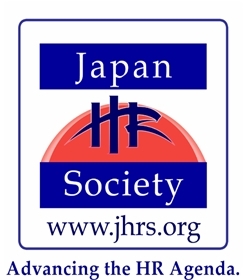The Chrysanthemum Throne-Japan's
existing monarchy-is said to go as far back as the 6th century and the
imperial succession has continued uninterrupted up to the present. This
record of continuity is unsurpassed by any other existing monarchy, not
only in neighboring Asian countries, but in the world. The political
authority of the emperor may only be symbolic but its continued
existence is a lesson on effective succession planning and without
doubt is as relevant in running a business as it has been with respect
to running the affairs of the nation.
Succession planning
in modern business parlance refers to a process of determining critical
roles within the company, identifying and assessing possible
successors, and providing them with the appropriate skills and
experience for present and future opportunities. Succession planning is
important not just in terms of organizational development but also in
terms of averting risks, particularly the risk of the company coping up
or surviving in the event of loss or demise of any of the
organization's key personnel.
Traditionally,
most of this planning was focused on key management and leadership
roles. Recently, however, succession planning has been steadily
evolving to include not just an organization's most senior position,
but also managers and team leaders at all levels.
According
to Harvard Business School professor Joseph Bower (2007), most
companies pay little attention to the issue of succession and end up
hiring either an outsider who quickly gets mired in corporate politics,
or an insider who knows the business but does not have the ability to
lead. Bower insists that the best candidates for the top posts are not
just insiders per se, but "insider outsiders" who know the company intimately but are outside the mainstream and, hence, capable of peripheral perspective.
Interestingly,
in Japan, some of the most successful companies are also among the
oldest. These are typically family businesses whose control and
management have been handed down in succession for centuries. In a
recent study, Yupana Wiwattanakantang of the Institute of Economic
Research at Hitotsubashi University found that heir-managed family
firms have been outperforming non-family firms in Japan. Non-family
firms belonging to a keiretsu corporate group actually ranked
lowest, both in terms of performance and firm value. The conclusion was
in sharp contrast to the general tendency of family firms in other
developed countries.
Japanese
companies, in other words, even those that are traditionally family
businesses, generally pass the torch to insiders even in the absence of
competent heirs within the family. Through adoptions and marriages,
these companies are able to overcome the problem of inter-generational
transmission of managerial skills as well as mitigate the likelihood of
conflict between managers and shareholders.
Of
course, sometimes things do not always work as they should. Even the
royal throne constantly has to contend with the possibility of the
imperial tradition vanishing with the last male heir-notwithstanding
the birth of Prince Hisahito.
Based
from the preceding discussions, it is clear that succession planning is
no longer an option but a MUST for companies (and empires) to
perpetuate themselves and be rightfully called "built to last."
The
real challenge then becomes one of execution and if you are really
determined in doing this, start by throwing away some of our
traditional beliefs with regards to the type of people we consider as
potential leaders. As HR professionals, maybe it is time for us to
rethink, review, challenge and update our own concepts of leadership
and gear towards succession and workforce plans that attract, recruit,
select, train and advance those individuals with the skills most
aligned with current realities.
It
may also be the time for us to provide better career tracks for younger
employees to get early exposure, for women to occupy key leadership
positions, for foreigners to be designated to positions of
responsibility, and even to challenge the commonly held view that
outsiders cannot perform as well as insiders.--JK
Download the white paper version of this Editorial .





